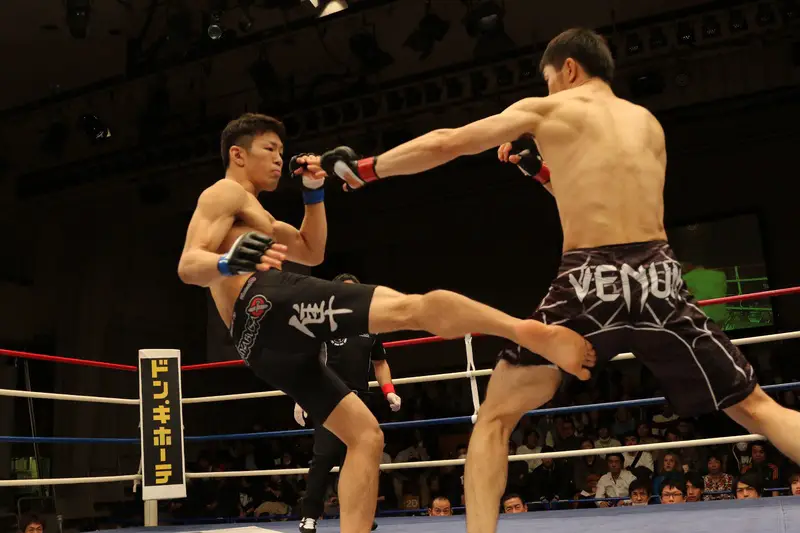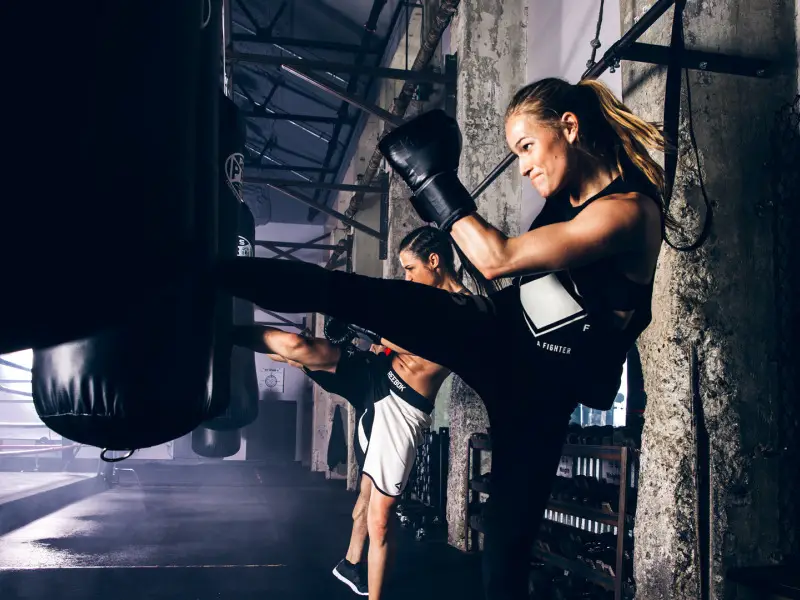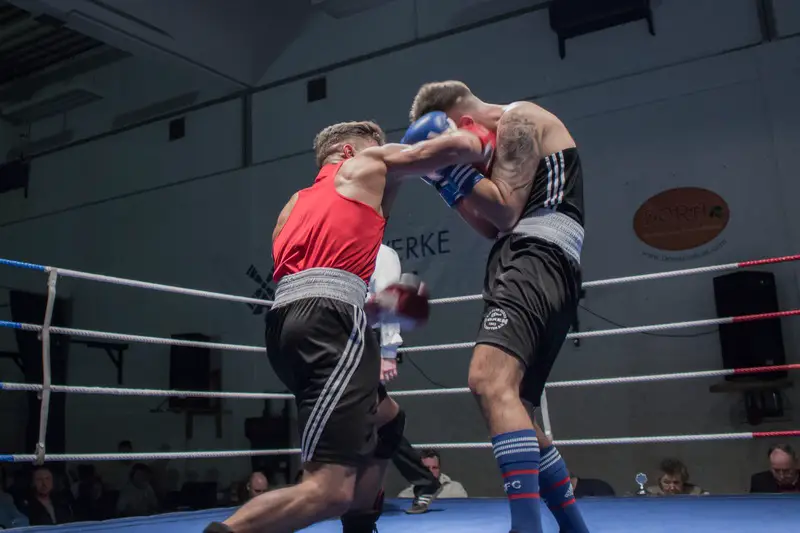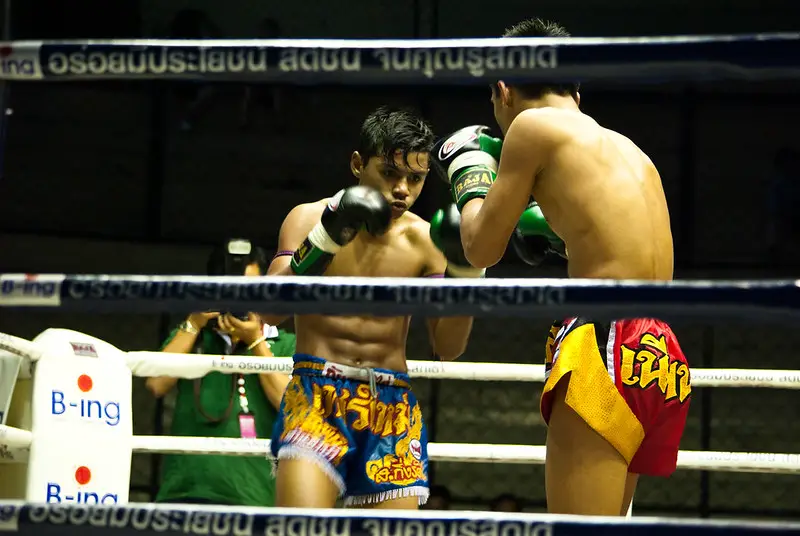Muay Thai is one of the hardest and most popular combat sports worldwide. But many people wonder, how effective Muay Thai is for self-defense and real-world situations.
Muay Thai skills and techniques are in line with street fighting or any type of freestyle combat. It is considered the complete striking system that, apart from teaching effective striking techniques, also emphasizes realistic teaching methods such as sparring that help practitioners learn how to apply fighting skills in real combat situations.
This is just a brief explanation so be sure to read the rest of this article to learn more about how practical Muay Thai techniques are in real life.
How effective is Muay Thai for Self-Defense?
Muay Thai is considered one of the most effective combat systems a person can train in to develop proper self-defense skills. From battle-proven techniques to realistic teaching methods, training equips practitioners with versatile fighting skills they can use in real-life situations.
Its overall effectiveness is under no question when it comes to self-defense or any type of freestyle fighting you may encounter in the real world. Just remember how practical Muay Thai is in MMA which has always served as a platform where martial arts styles prove their effectiveness with Thai boxing being considered the complete package when it comes to striking.

To a certain degree, its importance in freestyle combat reflects its practicality in real life. Inside the cage, it proved to be better than boxing, karate, Taekwondo, and many other striking martial arts.
But one must be careful. Thai boxing is a hard style that emphasizes damage. Putting techniques to work in a self-defense situation may easily result in serious injuries, or be lethal. Hitting a regular person not trained in martial arts with a full-blown shin to the head is very, very dangerous.
Why Muay Thai Is So Effective in Real Life?
Here are some of the key points when it comes to effectiveness.
- Covers all the ranges — Muay Thai teaches you how to strike using punches, kicks, elbows, and knee strikes, allowing practitioners to adapt to different scenarios and engage attackers at all ranges. Whether it’s a parking lot, bar, or other places, you will have techniques at your disposal.
- Highly effective in the clinch — is very important in controlling the opponent at close range. This is notably practical for street fighting where there is a lot of grabbing, pulling, and grappling at close range. You will have strength and balance to stay on the feet, and use techniques to do damage, control, or throw the opponent.
- Realistic training — places a strong emphasis on hard sparring where practitioners simulate a real fight against a training partner. This helps you train muscle memory, instincts, timing, and feeling for distance. These skills separate trained fighters from regular people and increase your chances of defending.
- Adaptability — the system is adaptable meaning that anyone, regardless of talent, age, or fitness can learn it in a reasonable time. Though complex, the learning syllabus emphasizes simple but effective techniques that do not require much time or energy to execute and do a lot of damage.
- Physical and mental preparation — includes athletes working on improving mental toughness, physical strength, endurance, and ability to take punishment. Once in a fight, you will know how to control emotions, stay calm and composed, and your mind won’t panic upon receiving a shot to the face or body.
Are there any limitations to using Muay Thai in self-defense situations?
While Muay Thai is a highly effective martial art for self-defense, it does have some limitations that individuals should be aware of:
- Lack of Ground Fighting
Muay Thai primarily focuses on striking with limited grappling in the clinch. It is not designed for ground fighting situations, which can be a limitation considering that most fights end up on the ground at some point. It does teach limited standup grappling, but not ground fighting.
- Legal Issues
Techniques students learn are taught to be executed aggressively. Thus, landing full-blown strikes to the head or body can cause serious injuries, or even be lethal. Most attackers who assault a trained Thai boxer end up looking like they have survived a head-on car crash. The injuries include concussions, bone fractures, deep lacerations, etc. Out on the streets, there is a thin line between being a victim and becoming an attacker.
- No Weapon Defense
The learning program does not include extensive weapon defense techniques. In situations involving weapons, additional training in self-defense systems focused on weapon disarming and defense may be necessary.
Muay Thai Self-Defense Techniques
Thai boxing includes a wide range of techniques practitioners can potentially use in a real fight. But considering the chaotic environment of street fighting, it’s always the best tactic to stick with the fundamental skills and keep it all direct and effective.
Following is a list of key Muay Thai self-defense that works well in most scenarios you may face in real life.
- Jab (straight punch) — is a direct punch one can use to create distance, disrupt an opponent’s approach, and set up follow-up strikes or escapes.
- Front Kick — a push kick delivered with the ball of the foot. It’s effective for maintaining distance, creating space, or damaging the opponent’s rib cage, liver, or groin area.
- Vertical knee — to the stomach is painful. It also has a surprising effect as most regular people won’t expect this strike to come.
- Elbows — of all types are devastating and painful. Horizontal, upward, or diagonal, these strikes work best at close range.
- Throws/trips — while not as common in self-defense scenarios, throws can be effective for quickly incapacitating an assailant and creating an opportunity to escape or gain control of the situation.
How To Use Muay Thai In a Real Fight
The best strategy is to use long-range striking techniques such as front kicks (teeps) and jabs to keep the opponent at bay and land from a safe distance. If you are in the closed space, then focus on quickly getting into a dominant clinch position you can use to either land damaging shots or throw the attacker off balance. Here are some more Muay Thai self-defense tips:
Assess the situation
Self-defense and real-world scenarios are not a pro-match where there are rules of engagement. It is chaos where there are no referees or protective gear. Thus, if a physical confrontation is unavoidable, assess the situation and be aware of your surroundings. Look for potential hazards or obstacles that you can use to your advantage such as a bottle, chair, a branch, rocks, etc.
Also, be aware of your location and position, determine where is the best direction to run away, and set up a strategy.
Maintain distance
In a street fight, maintaining distance is crucial. Keep your opponent at bay to minimize the risk of getting grabbed or tackled. As a trained striker, you will be more than capable of using long-range kicks to target attackers’ bodies or heads to keep them at a distance. Combined them with punches like a jab to further maximize the effectiveness.
Pick your shots well
Muay Thai is renowned for its powerful striking techniques such as punches, kicks, elbows, and knees. Aim for vulnerable areas such as the chin, nose, throat, and groin. Just a single well-placed punch can easily break the nose, jaw, or cause severe bleeding. This will destroy attackers’ momentum.
Clinch work
If the fight gets too close, utilize clinching techniques to control your opponent and land strikes. Most regular people don’t know how to grapple or battle in the clinch so use this as the advantage. Wrap your hands around their neck and start unloading with knees to the body and elbows to the face. Or switch to a body lock and throw them off balance.
Control your emotions
Stay calm and composed during the fight. Losing your temper can cloud your judgment and make you more susceptible to mistakes. You need a calm and clear mind to deal with the situation in the most effective way.
Finish the fight quickly
Street fights are unpredictable, and the longer they drag on, the greater the risk of injury. Aim to finish the fight as quickly as possible and then disengage.
How Long Does It Take To Learn Muay Thai?
It takes around 3 years for a dedicated student, with average talent for sports, to become an advanced Muay Thai practitioner. This means they are more than capable of applying techniques in real combat, including self-defense situations, and reacting the way they are trained.
But bear in mind that the exact time is based on several factors like consistency, talent, dedication, and quality of coaching staff. Depending on these factors, some students may progress faster than others, and develop better skills. Following is a general guideline on how long it takes to learn Muay Thai on average:
Basic Proficiency (6 months to 1 year):
In the initial months, practitioners can acquire fundamental Muay Thai techniques, footwork, and basic defensive manoeuvres. This level provides a foundation for self-defense and an understanding of key principles.
Intermediate Proficiency (1 to 2 years):
Building on the basics, practitioners can deepen their understanding of Muay Thai’s clinch work, advanced striking techniques, and combinations. This stage enhances adaptability in various real combat scenarios.
Advanced Proficiency (2 years and beyond):
Achieving a high level of proficiency involves consistent, long-term training. Advanced practitioners have honed their skills to a point where they can instinctively apply Muay Thai techniques in dynamic and unpredictable situations.
Can Women Learn Muay Thai for Self-Defense?
Muay Thai teaches women all about the physical and mental aspects of real combat, and how to protect themselves in real-life situations using practical skills. In fact, Thai boxing has become one of, if not THE most popular option among women looking to improve personal safety.

- Adaptability of training — enables women to maximize their potential by adapting training to their needs. This way you can focus on getting the most out of your strengths and minimize the weaknesses in a fight.
- Practical and Effective — each technique women learn in training and the skill they develop is designed to help them in real-world situations. This makes you feel confident in your abilities and not afraid to react and respond to an attack.
- Realistic Self-Defense Scenarios — training often involves realistic sparring scenarios that simulate real combat situations. This practical approach helps women develop the ability to think and act decisively under pressure.
- Self-Defense Mindset — Muay Thai not only teaches physical techniques but also instils a self-defense mindset. Women learn to be aware of their surroundings, recognize potential threats, and take proactive measures to ensure their safety.
Muay Thai For Women — 10 Key Benefits
Conclusion – Can You Use Muay Thai in A Real Fight?
Muay Thai stands out as an effective and versatile martial art for self-defense. It provides practitioners with a comprehensive set of striking skills, clinch work, and a realistic training approach.
Its adaptability, effectiveness in various ranges, and emphasis on real-world scenarios make it a valuable skill set for personal safety. However, be aware of its limitations, including a focus on stand-up fighting, potential legal concerns due to the intensity of techniques, and the absence of extensive weapon defense training.


